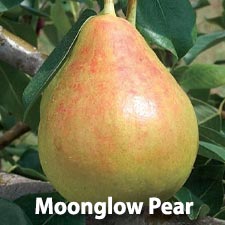For birthdays, holidays or a housewarming, Fruit Trees make a wonderful and unique gift! We'll even contact the recipient when their order is ready to be picked up.
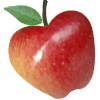 |
Akane Apple: An excellent early season apple with a good balance of sweet and sharp flavors. Medium sized apples of carmine red stripes over a clear pale yellow.
- Good for: fresh eating, baking, sauce & drying
- Early – mid season bloomer
- Harvest early – mid September
- WSU recommends
- Resistant to scab & mildew
- Needs a pollinator
|
Fuji Apple: A yellowish apple with orange red blushed stripes. They have a sweet tart flavor with white flesh that is firm and crunchy. Flavor is excellent.
- Good for: fresh eating, baking, sauce & freezing
- Late season bloomer
- Harvest late October - November
- Keeps well
- Needs a pollinator
|
 |
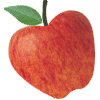
|
Gala Apple: A yellow skinned apple with vivid orange-red stripes and blushing. It has a sweet, crisp and dense creamy yellow flesh.
- Good for: fresh eating, cider, pies & sauce
- Mid - late season bloomer
- Harvest in October
- WSU recommends
- Keeps well
- Needs a pollinator
|
Honeycrisp Apple: A superior quality apple that has red skin and outstanding crisp, sweet-tart and juicy flesh.
- Good for: fresh eating, baking, sauce & freezing
- Early - mid season bloomer
- Harvest September
- WSU recommends
- Great keeper
- Needs a pollinator
|
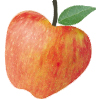 |
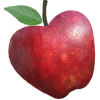 |
Liberty Apple: This apple has a dark red skin and crisp, juicy, sweet flesh.
- Good for: fresh eating, baking, sauce, cooking & freezing
- Early - mid season bloomer
- Harvest in October
- WSU recommends
- Highly disease resistant
- Keeps well
- Needs a pollinator
|
Pink Lady Apple: Very crisp, sweet-tart with a distinct flavor. Skin is an attractive reddish-pink blush, with a yellow background color. White flesh resists browning.
- Good for: snacking, salads, baking, cooking, jucing & freezing
- Harvest October and November
- Great keeper
- Self-fertile
|
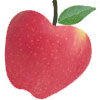 |
| |
|

|
Liberty Apple: This apple has a dark red skin and crisp, juicy, sweet flesh.
- Good for: fresh eating, baking, sauce, cooking & freezing
- Early - mid season bloomer
- Harvest in October
- WSU recommends
- Highly disease resistant
- Keeps well
- Needs a pollinator
|
Spartan Apple: A McIntosh style apple. Very dark red fruit with white, crisp, juicy flesh. Has excellent flavor.
- Good for: fresh eating, cider, pies & sauce
- Early – Mid season bloomer
- Harvest late
- WSU recommends
- Stores well
- Highly disease resistant
- Needs a pollinator
|
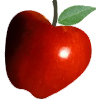 |
| |
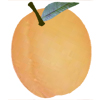 |
Puget Gold Apricot Introduced and named by Washington State University. Pproduces large elongated fruit of very good flavor.
- Good for: fresh eating
- Harvest in August
- Self-fertile
- Cold hardy
|
| |
| CHERRIES |
Bing Cherry: This cherry produces a top quality, large dark red fruit. Fruit is intensely sweet and juicy .
- Great for fresh eating, canning & cooking
- Needs a pollinator
|
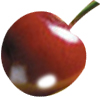 |
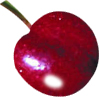 |
Lapins Cherry: A prolific producer of deep purple-red, very juicy cherries. Crack or split- resistant.
- Great for: fresh eating, canning & cooking
- Self-fertile
- Great pollinator
|
Montmorency Cherry: America’s most popular tart cherry for pies and preserves with a rich, tart flavor that bakers and jam makers love.
- Great for: canning & cooking
- Self-fertile
- Great pollinator
|
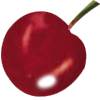 |
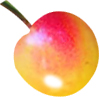 |
Rainier Cherry: Rainier cherries distinguish themselves from all other cherry varieties by the color of their skin and the unparalleled high sugar levels. Memorably sweet and low acid with a caramel-like finish on the palate.
- Great for: fresh eating or as an ingredient in desserts
- Needs a pollinator
|
Royal Ann Cherry: This heart shaped, firm and juicy cherry has golden-pink skin and flesh. Seldom bothered by birds.
- Great for: fresh eating & canning
- Needs a pollinator
|
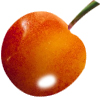 |
| |
| PEACHES |
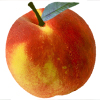 |
Frost Peach: This peach is highly resistant to peach leaf curl when older. The skin has a red blush over yellow background with yellow flesh.
- Good for: fresh eating, canning, preserves
- Harvest in August
- WSU recommends
- Freestone
- Self-fertile
|
Q18 Peach: Peach leaf curl resistant variety, tested at WSU. Reddish-orange, white-fleshed, sweet and juicy.
- Good for: fresh eating and making jams and jellies
- Harvest in late July to early August
- Semi-Freestone
- Self-fertile
|
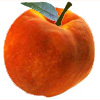 |
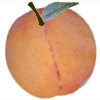 |
Veteran Peach: Very reliable for cold climates: winter hardy and late blooming. Yellow to yellow orange skin. Yellow flesh is firm and juicy but coarse grained. Richly flavored.
- Good for: fresh eating and canning
- Harvest in late July
- Freestone
- Self-fertile
|
| |
| PEARS (ASIAN) |
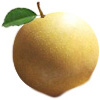
|
20th Century Asian Pear: Medium to large round yellow-green fruit with firm white flesh that's crisp like an apple. Mild-flavored, juicy and sweet.
- Good for: fresh eating, salads & canning
- Harvest Mid-September
- Needs a pollinator
|
Chojuro Asian Pear: Traditional Japanese favorite, large fruit with brown skin and sweet, flavorful flesh. A real keeper.
- Good for: fresh eating
- Harvest Late August to Mid-September
- Needs a pollinator
|
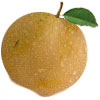 |
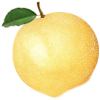
|
Shinseiki Asian Pear:Crisp like an apple, juicy and sweet. Easy to grow. Bright yellow skin.
- Good for: fresh eating & canning
- Great keeper
- Harvest Late July-Early August
- Heavy bearer (by 2nd year)
- Self-fertile
|
| |
| PEARS (EUROPEAN) |
Anjou Pear: A large pear with white, juicy flesh. It has a sweet brisk flavor. The fruit is light green in color with some yellowing when ripe.
- Good for: fresh eating, baking & canning
- Good keeper
- Needs a pollinator
- Ripens after the Bartlett
|
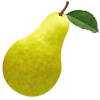 |
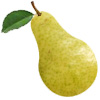 |
Bartlett Pear: A greenish-golden pear having a round-bell shape. It produces sweet, juicy fruit.
- Good for: fresh eating, tarts, cooking & canning
- Good keeper
- Needs a pollinator for best results
|
Comice Pear: A round, short-necked pear with greenish yellow skin and red blush. Sweet and aromatic with superb flavor.
- Good for: fresh eating; makes a fine dessert pear
- Needs a pollinator for best results
|
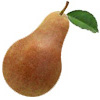 |
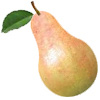 |
Moonglow Pear: A medium-to-large pear with mild flavor and a soft, smooth texture with very little grit..
- Excellent for: fresh juice or canning
- Resistant to fire blight.
- Needs a pollinator for best results; a strong pollinator for other pear varieties.
|
Ubileen Pear: This pear has large, attractive yellow fruit with a nice red blush and a delicious sweet flavor. Very aromatic.
- Good for: fresh eating, baking & canning
- Needs a pollinator
|
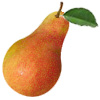 |
| |
| PLUMS |
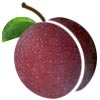
|
Beauty Plum: Red skin with sweet, amber, richly flavored flesh. Tastes like the Santa Rosa, but performs much better in Pacific Northwest climates.
- Good for: fresh eating, canning and jam/jelly
- Harvest mid July- August
- Self-fertile
|
Brooks Plum:European plum with oval-shaped fruit, purplish-black skin and yellow flesh. Larger and sweeter than Italian. Ripens one week earlier than Italian.
- Good for: drying, canning and fresh eating
- Self-fertile
- Freestone
- Harvest mid-late August
|
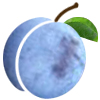 |
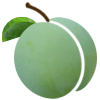 |
Green Gage Plum: An old world plum with excellent eating quality and culinary versatility. Yellow-green fruit has a rich plum-honey flavor.
- Good for: canning, preserves, desserts and fresh eating
- Freestone
- Self-fertile
- Ripens in early August
|
Italian Plum: A European plum/prune whose fruit has dark purple skin with yellow-greenish flesh. Its high sugar content makes it a great drying plum.
- Good for: drying, canning, fresh eating & baking
- Needs a pollinator
- Freestone
|
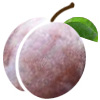 |
| |
CALL (360) 225-8750 OR (877) 658-0566 TO ORDER YOUR TREES TODAY!
|

